How to Grill a Whole Salmon
on Aug 21, 2021, Updated Oct 31, 2021
This post may contain affiliate links. Please read our disclosure policy.
Learn how to grill a whole salmon to perfection every time. It is summertime, and there is nothing better than evenings spent with family and friends while grilling up some awesome food! This salmon recipe works on gas grills, charcoal grills, and pellet grills like the Traeger.
I will show you how to brine the salmon in this recipe, but you can skip the brine and still get great results. Keep reading to get all of the best tips for cooking salmon on the grill and learn the best ways to get juicy, tender, and flaky salmon. You don’t want to ruin your beautiful salmon by overcooking it to the point that it is dry, so follow this guide for perfection every time!
Cooking a whole salmon might look intimidating, but it is incredibly easy, and it is the most affordable way to buy and cook salmon. You should make this recipe even if you don’t have a large crowd to feed because the leftovers are great for multiple dinners. Use the leftovers for salmon patties, salads, sandwiches, and wraps, or salmon pasta. This is one of those recipes that keeps on giving, with so many ways to repurpose the leftovers for another amazing meal!

Why This Recipe is So Great
The salmon is stuffed full of herbs and other aromatics, including beautiful slices of citrus, and it really looks impressive and makes a statement at the BBQ. If you have never grilled a whole salmon before, you have gotta try it, and this is why:
- It is really simple to prepare since you don’t have to fillet the salmon.
- The lemon chive butter sauce is perfect drizzled on the salmon.
- The whole salmon packed full of goodies is like artwork on the grill.
- You can feed a large group or save the leftovers for another meal.
- After grilling the whole salmon, the bones easily peel out of the flesh.
- The salmon is super moist and bursting with flavor.
- You can grill the whole salmon on a charcoal, gas, or pellet grill, like a Traeger.
- This recipe is versatile, so use any herbs you have on hand.

Ingredients
My favorite thing about this recipe is how much flavor is packed into this salmon! If you don’t have these herbs on hand, you can substitute them at your discretion. There is also a delicious lemon chive butter sauce to coat the salmon once it is served. If you want an even more juicy and moist salmon, brine it overnight in the fridge.
For the optional brine
- Kosher salt
- Brown sugar
- Water
For the salmon
- Whole salmon
- Olive Oil
- Lemons
- Lime
- Red onion
- Garlic
- Thyme
- Parsley
- Tarragon
For the lemon chive butter sauce
- Butter
- Chives
- Lemon
- Garlic
- Salt
- Pepper
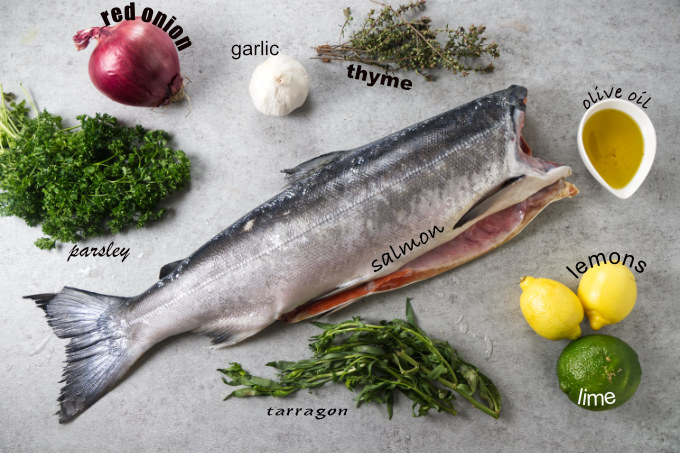
Ingredients for the optional brine. Ingredients for lemon chive butter sauce.
How to Grill a Whole Salmon
Step 1: brine the salmon (optional)
Combine the brown sugar, salt, and water in a medium saucepan. Bring the mixture to a simmer over medium heat and stir constantly until the salt and sugar are completely dissolved. Remove the solution from the heat and add some ice to cool it down.
Pour the solution into a container large enough to contain the whole salmon. You can use the plastic produce drawer in your fridge or you can use this large food container. If the salmon isn’t completely submerged in the brining solution, make more of the brine and add it to the container. Cover the container and place it in the fridge overnight, or for at least one hour.
Step 2: prepare the salmon
Preheat the grill to 400°F while you prepare the salmon. If you are cooking the salmon on a Trager or similar pellet grill, choose your favorite pellets. I like to use a sweeter wood like cherry, maple, apple, or pecan. This will help to add some smokiness to the fish, but not overdo it.
Pat the salmon dry all over, inside and out. Coat the exterior and inside cavity of the salmon with olive oil and season it with salt and pepper.
Stuff the cavity of the salmon with slices of onion, lemon, lime, and garlic as well as sprigs of thyme, tarragon, and parsley. You can really stuff it full, almost to the point where it is overflowing.
Optional step. Let the fish brine overnight. Stuff the herbs and vegetables inside the fish cavity. Place on the grill. Make the butter sauce while the fish cooks.
Step 3: grill the whole salmon
Transfer the salmon to the hot grill grates and close the lid. Grill the whole salmon for 20 to 30 minutes or until the internal temperature of the salmon reaches 130°F.
I always trust this ThermoWorks Signals WiFi thermometer to tell me when I am done cooking. The Signals thermometer has 4 probes, so you can monitor multiple items, all from the comfort of the couch using the ThermoWorks App on your phone.
For super fast temperature checks, this ThermoWorks ONE Thermapen gives you an accurate reading in only one second! Now you will not have any more excuses for not hitting perfection!
If you prefer a more rare salmon, you can pull it off the grill at 122°F. However, the FDA recommends cooking salmon to 145°F, but I think salmon is way too dry when cooked to that temperature. Use your own discretion as to what is acceptable doneness for you. I usually take my salmon off the Traeger when it reaches an internal temperature of 130°F.
Step 4: make the lemon chive butter sauce
While the whole salmon is on the grill cooking, make your butter sauce. Over medium heat, melt the butter in a medium-sized saucepan. Once the butter is melted, add the salt, pepper, garlic, lemon, and chives. Cook over medium heat for 5 minutes so that the flavors can infuse into the butter.
Step 5: serve the salmon
Place the cooked salmon on a large counter or cutting board. You may choose to remove the skin from the salmon first, in which case, simply begin by peeling the skin away from the flesh. It should come off in large sections fairly easily.
Then, starting at the head, use a fish spatula or sturdy metal spatula and peel the spine up and away. The spatula should be slid underneath the spine at the head of the fish. From there, gently lift upward with the spatula to separate the top fillet from the bottom fillet. The entire top fillet of the salmon will be removed with the entire spine and the majority of the bones intact. Flip the top fillet over and rest it alongside the bottom fillet. Gently peel the spine away and remove it from the fish entirely. Use the spatula to support the flesh of the fish so it doesn’t break apart during these maneuvers.
Season the salmon with salt and pepper and serve it alongside the lemon-chive butter sauce.
Tip: Use a hefty fish spatula to help you successfully flip over the fillet. A flimsy spatula make a mess of the process and leave you with a crumbly salmon fillet.
Ways to Use Leftover Salmon
When you cook a whole salmon, you will likely have a lot of leftovers. Here are some creative and tasty ways to incorporate salmon into some dishes.
These air fryer tilapia fish tacos are incredible! You can easily replace the tilapia with some of the leftover salmon for your next Taco Tuesday. The jalapeño lime-cilantro slaw is fresh and adds a tangy crunch to your salmon fish tacos.
The possibilities are endless. Here are some other ideas for your next salmon dinner after cooking up a whole salmon.
- Salmon cakes
- Salmon quiche
- Salmon chowder
- Salmon salad
- Salmon and crab Wellington

Frequently Asked Questions
Do you have to brine the salmon?
You don’t have to, but if you have the time then you definitely should. Even a quick one-hour brine will add moisture to your salmon and help prevent it from drying out while grilling on the Traeger. The brine can also impart lots of salt and flavor to the salmon. Add your favorite herbs and citrus, or keep it simple with salt. Either way, the brine will be your ticket to award-winning salmon at your next cookout.
The brine also helps prevent the salmon from leaching out white albumin while it cooks and makes a prettier presentation. Albumin is the white substance that you sometimes notice when cooking a salmon and it is totally fine to eat.
Should you rinse the salmon after the brine?
You don’t need to! I don’t ever rinse the brine from my salmon (or any other meat) and it is never too salty. As long as you don’t brine the salmon for more than a day, you only need to pat it dry before seasoning it and throwing it on the Traeger or other grill.
How do you keep salmon from sticking to the grill?
Grilling a whole salmon with the skin on will help to keep the fish from sticking to the grill. You can also coat the skin in olive or vegetable oil to help prevent the skin from sticking. I also use a rag to coat the grill grates of my Trager with vegetable oil so I don’t need to worry about my salmon sticking.
What Else is Cooking?
You have to try this easy recipe for barbecue air fryer chicken legs. You know it is good when you lick your fingers clean of the delicious, caramelized barbecue sauce. You might need some extra napkins and wet wipes because these things are messy, in a good way!
I am a sucker for pizza rolls especially these homemade air fryer pizza rolls. The crust is tender and flakey and the pinwheels are packed full of our favorite pizza toppings. You can make these ahead of time and freeze them so that when the craving hits, you too can have pizza rolls in just a few minutes.

CONNECT WITH A LICENSE TO GRILL!
Be sure to follow us on our social media accounts.
Did you make this recipe? Tell us about it in the comments below!
💬 Tell Me What You Think!
Did you try out this recipe? Please leave a comment below and let me know how you liked it. Also, snap a picture and post it to your favorite social platform. Be sure to tag me at @alicensetogrill and let me know how you liked it!

How to Grill a Whole Salmon
Cooking a whole salmon is the most affordable way to get salmon on the table and it is a lot easier than it looks. The overnight brine is optional but will give you a little extra insurance to achieve a moist, tender fish. It also seasons the fish thoroughly and prevents that white albumin that seeps out of the fish as it cooks.
Ingredients
For the optional brine
- 3 quarts cold water (see notes)
- 3/4 cups Kosher salt
- 1/4 cup brown sugar
For the Grilled Salmon
- 1 whole, cleaned salmon (3 to 5 pounds)
- 3 to 4 tablespoons olive oil
- salt and pepper
- 1 large red onion, thinly sliced
- 8 to 10 garlic cloves, thinly sliced
- 2 lemons, thinly sliced
- 1 lime, thinly sliced
- several sprigs of fresh parsley, tarragon, and thyme
For the lemon, garlic, chive butter
- 6 ounces butter, softened
- 2 garlic cloves, minced
- 3 to 4 tablespoons chopped fresh chives (see notes)
- zest of one small lemon
- 1 tablespoon fresh lemon juice
- 1/4 teaspoon each of salt and pepper
Instructions
To brine the salmon
- Combine the sugar, salt, and 3 cups of water in a saucepan. Bring to a simmer and stir until the salt is dissolved. Remove from the heat and add a few cups of ice to cool the solution down. Transfer to a container large enough to hold the salmon and pour in the rest of the water.
- Place the salmon in the brine, cover it and place it in the fridge overnight. (Make sure the brine covers the salmon. If it doesn’t, make some additional brine solution).
For the grilled salmon
- Preheat the grill to 400°F.
- Pat the salmon dry with paper towels. Coat the cavity and outside the salmon with olive oil, then sprinkle all over with salt and pepper (make sure you also get inside the cavity). Coating the outside of the salmon will help prevent it from sticking to the grill.
- Stuff the cavity with slices of onion, garlic, lemon, lime, and sprigs of the herbs.
- Transfer the salmon directly to the hot grill grates and close the lid.
- Cook for 20 to 30 minutes or until a meat thermometer registers 130°F (or 122°F for rare salmon, see notes).
- Make the lemon butter while the salmon cooks.
Lemon Herb Butter
- Melt the butter in a saucepan over medium heat. Add the fresh herbs, lemon juice, salt, and pepper.
Serve the salmon
- Place the salmon on a wide platter or cutting board. Pull back the skin on top of the fish. Once you get it started, it will peel right off.
- Starting at the head end, lift on the spine and use a wide spatula to support the flesh on either side of the top fillet as you lift it. The top fillet and the spine will peel right off of the lower fillet. (See the photos above for reference). Next, flip the top fillet over so the spine is on top.
- Pull the spine up and away from the top fillet. Use the spatula to hold the flesh down under the spine.
- Season the salmon with salt and pepper and serve with the lemon herb butter.
Notes
- If you opt to brine the salmon fillet first, make sure you use enough water to cover the salmon. The water may vary depending on the size of your salmon and the size of the container you place it in. If you need more water, add 1 tablespoon of salt and 1 teaspoon of sugar for each additional cup of water.
- You can substitute the fresh herbs with any that you have on hand. Some great ideas that go well with herb butter and salmon are dill, savory, thyme, rosemary, sage, and basil.
- The FDA recommends cooking finfish like salmon to 145°F. However, salmon gets pretty dry when it is cooked to that temperature. I prefer cooking salmon to a temperature between 122°F and 130°F for a tender, moist, and flaky texture. Use your judgment regarding the temperature.
- Brining the salmon is an optional step, but it improves the flavor and texture considerably. The brine helps season the meat more thoroughly, and it helps the meat stay moist and juicy. It also helps prevent the salmon from leaching out white albumin while cooking and making a prettier presentation. The white albumin is not a problem to eat, but some people get a bit squeamish when they see it on the surface of cooked salmon.
- When you separate the salmon fillets and remove the spine, if the salmon is cooked well-done, it will separate much easier than if it is cooked rare. For rare salmon, you may need to pry a thin spatula between the fillet and the spine.
- If the heat on your grill fluctuates, the cooking time will vary. The best way to be certain that the salmon is finished cooking is to use a meat thermometer.
Recommended Products
As an Amazon Associate and member of other affiliate programs, I earn from qualifying purchases.
Nutrition Information:
Yield: 16 Serving Size: 1Amount Per Serving: Calories: 160Total Fat: 14gSaturated Fat: 6gTrans Fat: 0gUnsaturated Fat: 7gCholesterol: 32mgSodium: 5428mgCarbohydrates: 7gFiber: 1gSugar: 4gProtein: 4g
Nutrition information is a guideline only, is calculated automatically by third party software, and absolute accuracy is not guaranteed.
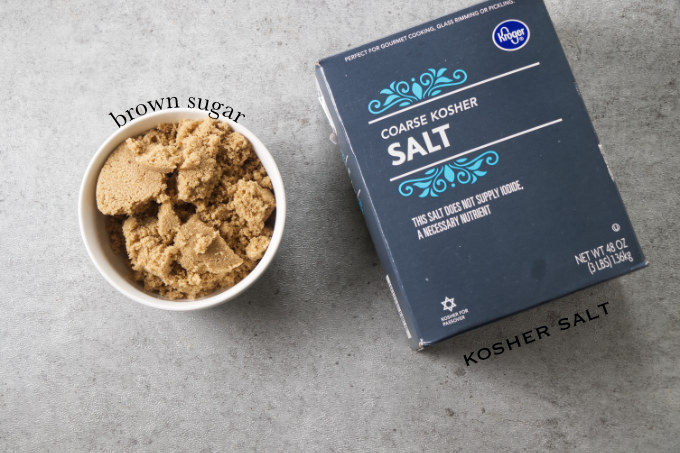
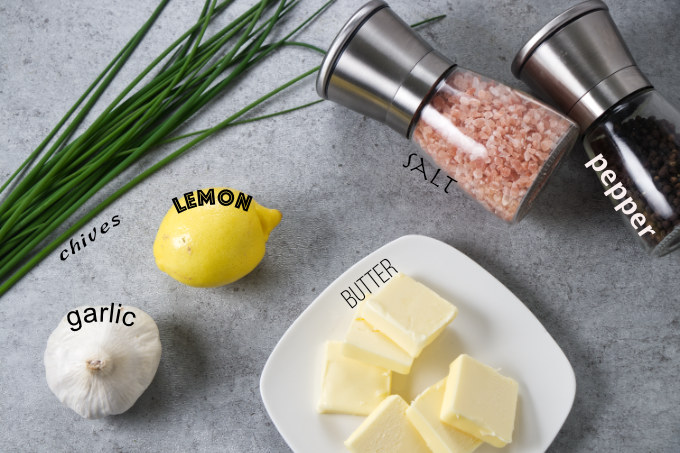

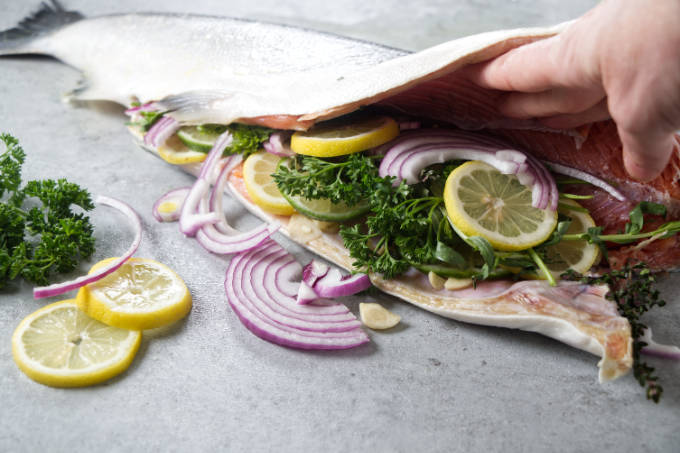
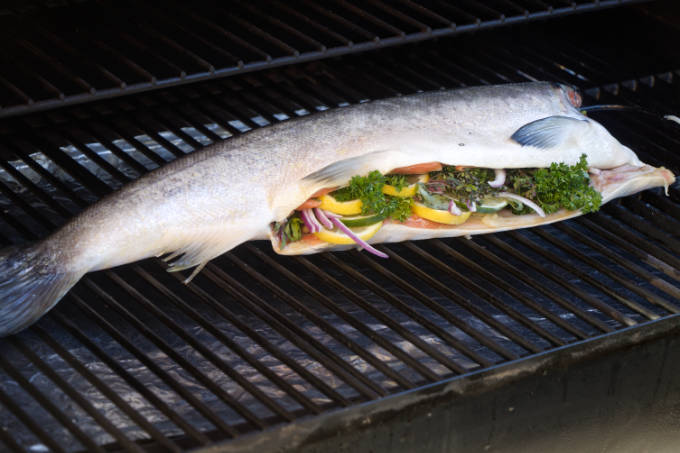

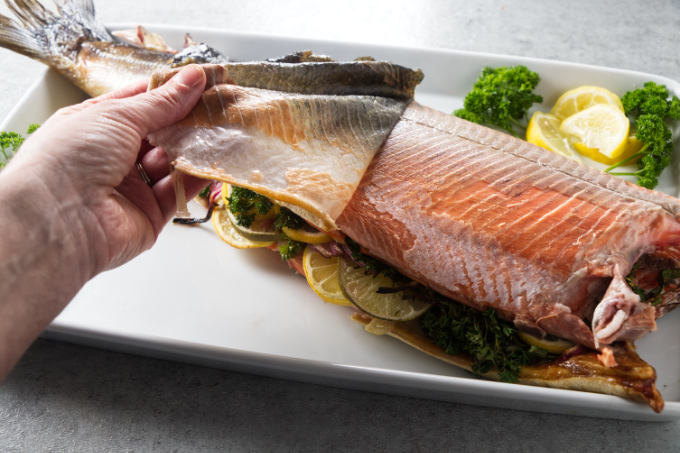
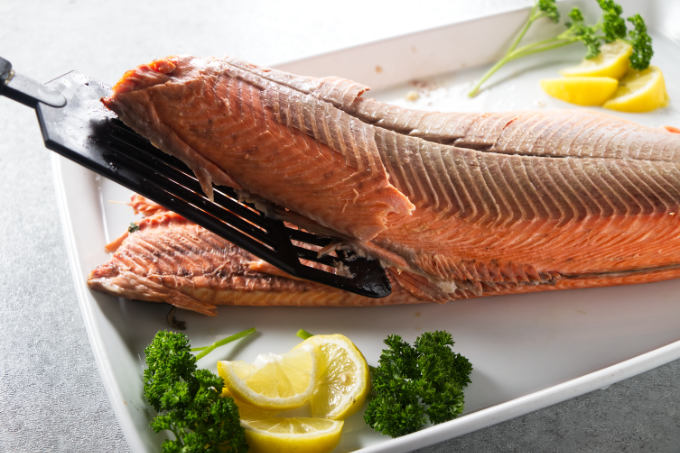
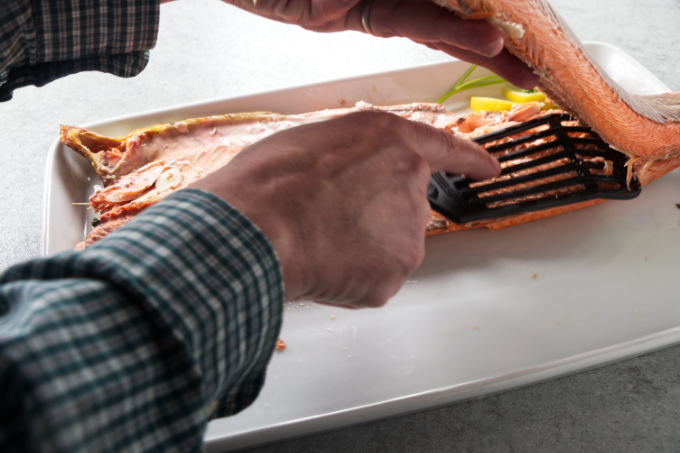
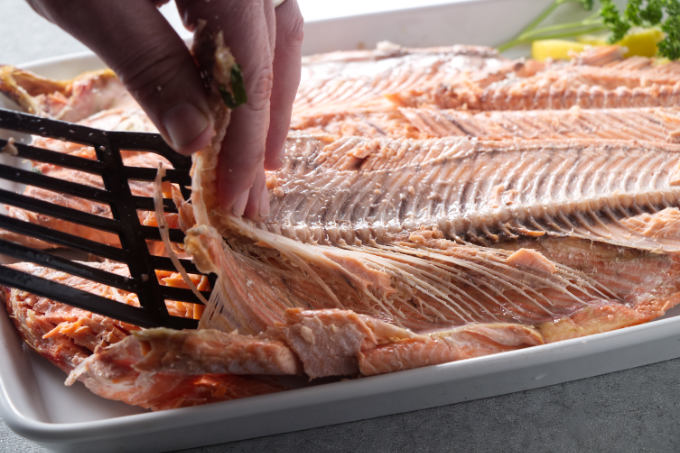
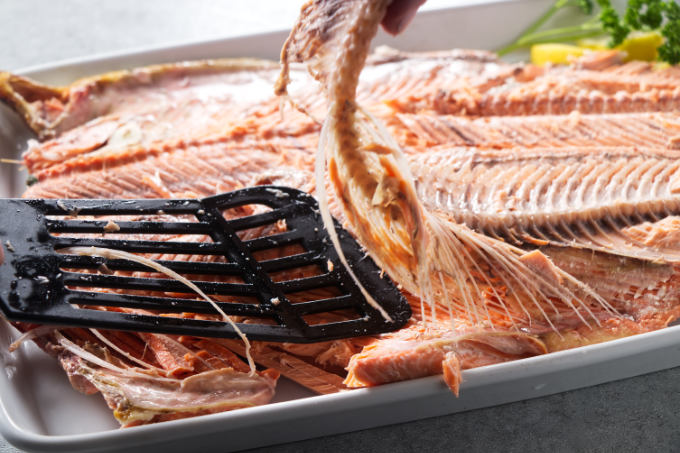
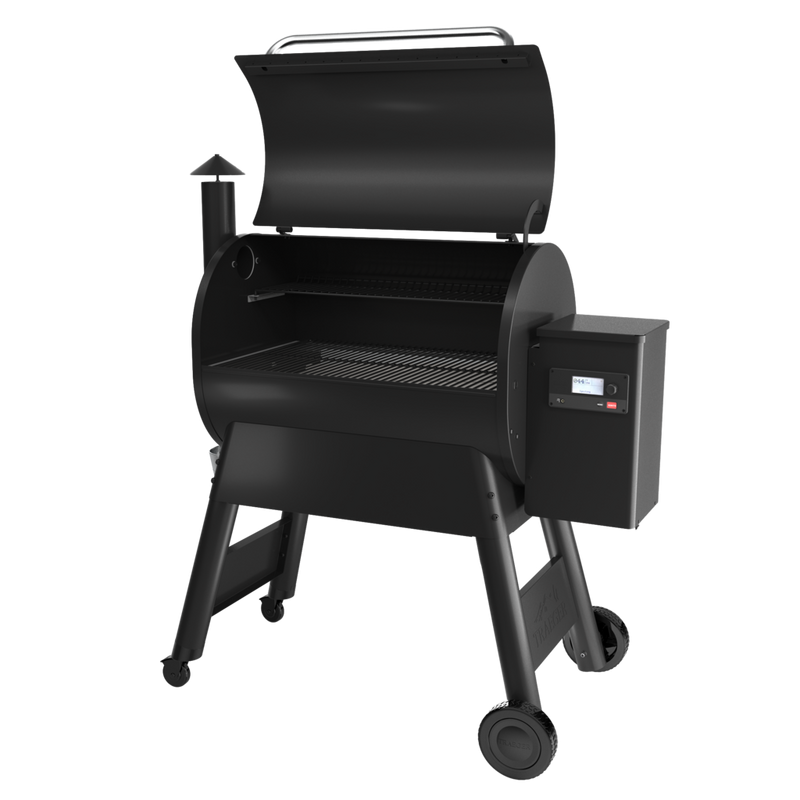
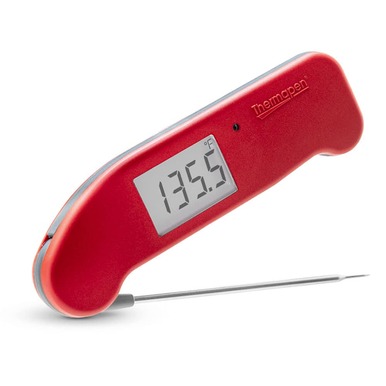


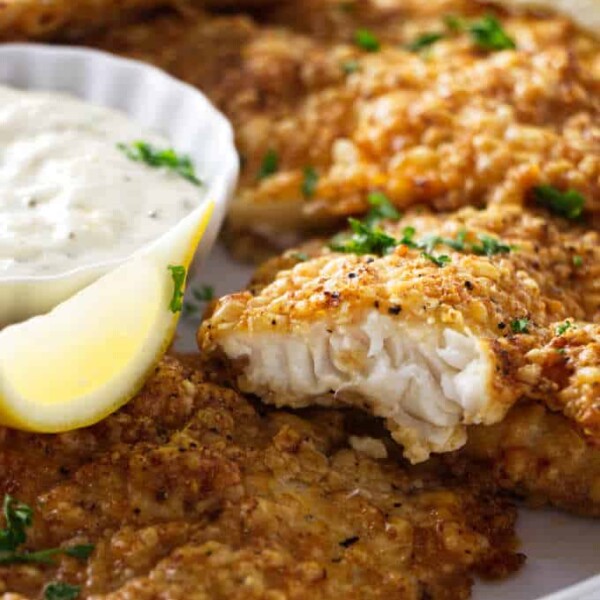



Great fish. We also used some hemp to tie the fish together so the lemon slices and things would not fall out. Delicious
Hi Kim! Thank you for the comment! Happy you like it. Great idea to tie everything together.
One of the best whole salmons I’ve made… the brining made it juicy and tender and the selection of herbs gave the salmon great falvor ! I didn’t make the butter … I didn’t need it but it would offer another great layer 😊
Hi Chagnet, thank you for the comment! I am happy enjoyed the salmon. It is one of my favorite things to cook during the summer.
Just double checking the amount of salt. Is 3/4 to 3 quarts of water correct.
I am Barbecuing my 4 pound whole salmon tonight
Yes, as long as you are using Kosher salt. If you only have regular table salt, you will want to decrease the amount to 6 tablespoons. Thanks for the question.
Hello, I would like to make this tomorrow, without the brine. My question is do you not turn the salmon over on the grill partway through cooking?
Hi Ann, thank you for the comment! Flipping the salmon halfway through can help it cook more evenly. But I found that I didn’t need to flip it since the Traeger is indirect heat and cooks it fairly evenly.